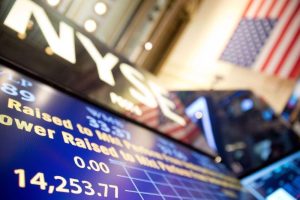Alătură-te comunității noastre!
Vezi cele mai recente știri & informații din piața de capital


Nonfarm payrolls in the U.S. rose 236k in March, above the consensus of 230k. The data for the previous two months were revised downward by 17k, while the increase in private sector payrolls was weaker than expected (218k) at 189k.
The details, however, offer a mixed picture. On the positive side, the majority of new jobs created were full-time positions.
Until last month, all of the jobs added over the past 11 months (on balance) were part-time positions, while full-time employment was flat.
The sectors adding jobs continue to be government (+47k) and leisure/hospitality (+72k), while private education/healthcare continues its strong performance with a gain of 65k. On the negative side, construction, manufacturing, finance, retail trade and temporary help all lost jobs.
Source: tradingeconomics.com
Wages rose 0.3% month-on-month, as expected, while the unemployment rate fell to 3.5%. The tight labour market and job creation raise the likelihood of a 25 basis point rate hike on May 3.
CPI Next Wednesday’s report from CPI is expected to show a 0.4% month-over-month increase in core inflation, more than double the 0.17% month-over-month rate needed to bring U.S. inflation back to 2% year-over-year.
If this is the case, it is hard to imagine the Fed pausing in May unless the financial system comes under renewed pressure.
Banking stress exacerbates headwinds
Still, employment data is a lagging indicator – the last data point to turn in a cycle – and the outlook is getting tougher.
The economy has seen the most aggressive monetary tightening in 40 years, while recent tensions in the banking sector are likely to disrupt the flow of credit to the economy.
In addition, business confidence (whether it’s business leader confidence as measured by the Conference Board or the National Federation of Independent Business’ Optimism Index) is at recessionary levels and the housing market is in deep trouble – an unfavourable combination for job creation.
Even before the events at Silicon Valley Bank, the Federal Reserve’s January survey of senior lending officials had shown that banks were becoming more cautious and lending was likely to be curtailed.
This situation will inevitably worsen and add to the pressure on struggling businesses and households. The chart above suggests that we should expect unemployment to start rising in the late second quarter/early third quarter.
Rising layoffs and claims for unemployment benefits are another warning sign
This forecast is also supported by recent layoffs and revisions to initial jobless claims data. There is always a lag between the announcement of layoffs and the actual job loss that results in a claim for unemployment benefits.
Fed will change course as hard landing pushes inflation faster
All of us are concerned about the outlook for U.S. labour market numbers, but comments from Fed officials suggest that they believe they have more work to do to ensure that inflationary pressures are removed. Market prices are currently at 55:45 for a 25 basis point Fed rate hike on May 3.









Vezi cele mai recente știri & informații din piața de capital